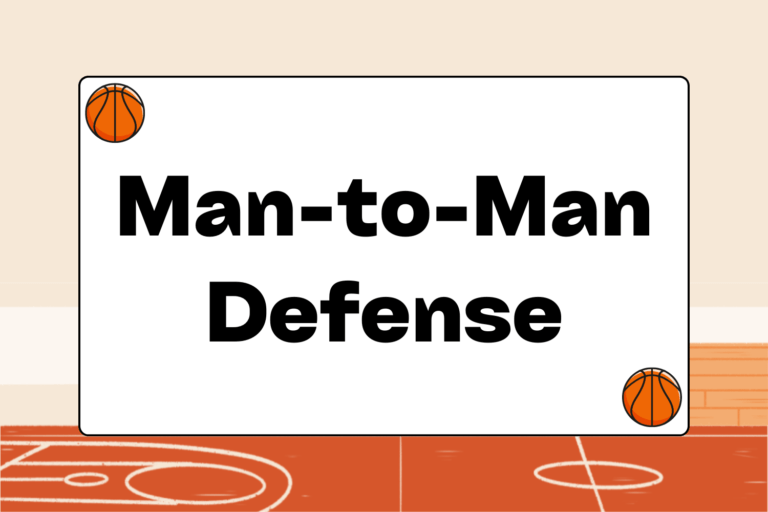In basketball, transition offense describes the process of changing from defense to offense. In most cases, transition offense refers to a rapid, up-tempo offensive strategy that creates quick scoring chances at the basket. Some teams flourish in a fast break setting, while others are stronger in a slow-tempo, half-court offense.
The extent to which a team looks for transition offense opportunities depends on both the philosophy of the coaches and the strengths of the players. However, every team and player should work on transition offense because of the advantages it can provide. These include:
- The chance to create easy scores.
- The pressure a defense feels when having to react quickly.
- The chance to break pressure defenses.
- Creating a team-oriented offense.
In fact, transition offense is both a great equalizer for offensively-challenged teams and a major source of offense for powerhouse teams. This guide will demonstrate the basics of transition offense, and describe the aggressive mindset players must have to excel on the fast break.
Stay Under Control
The hardest concept to master for many players in the transition offense is the need to stay under control while being aggressive. Controlled aggression means knowing when to push the ball upcourt, when to make a long outlet pass, and when to slow the ball down and wait for the next opportunity.
The right way to develop controlled aggression is extensive drills and an understanding of the four steps for transition offense:
- Defensive Rebounding.
- Outlet Passing.
- Getting the ball to the middle of the floor.
- Filling the Lane.
The key is to balance the desire to push the ball quickly upcourt with the decision to value possession of the ball above all else. Losing control on the break can easily lead to turnovers and missed opportunities, which give the ball and momentum to the opposition.
Defensive Rebounding
Transition opportunities almost always start with a defensive rebound following a missed shot by the opposition. Since no type of offense can start without possession of the ball, defensive rebounding is the first and most important step to creating the fast break.
When a shot goes up, the wing players and post player should attack the basket and go aggressively for the rebound. At the same time, the two guards should flare away from the retreating defense – one toward the sideline and the other toward the middle of the floor.
The rebounder must protect the basketball and look to pass immediately. This is a bang-bang-bang sequence:
- Rebound
- Protect
- Outlet pass
The quicker the rebounder can look upcourt, the quicker the transition opportunity can start. However, protecting the basketball comes first. If completely necessary, the rebounder can take a dribble or two away from a pressuring defender to get a clear passing lane.
“No rebounds, no ring.”
Pat Riley
Five-time NBA Champion Coach
The Outlet Pass
The outlet pass should be a simple pass to a guard who has flared out to receive the ball. The guard should have his hands up and make a sure to make the catch before sprinting upcourt. As much as any other pass, the outlet must be crisp and certain. In other words, no lobs and no lazy passing from the rebounder are allowed. The outlet sets the tone for the fast break. As rebounders improve at the outlet pass, they can learn to make baseball passes, or one-handed passes from behind the ear. A big man who can make a strong, half-court baseball pass to spark transition offense is a huge asset.
Get the Ball to the Middle
In transition offense, the ball should be passed or dribbled to the middle of the floor while players sprint downcourt to the basket. If the outlet is made to the guard along the sideline, that guard has two options:
- Pass to the other guard as he cuts to the middle.
- Dribble into the middle of the floor.
The goal is to get the ball to the other basket as quickly as possible, and the quickest way to do that is by passing it. The fastest sprinter in the world can’t beat a length-of-the-court pass. Guards and wing players must look to sprint downcourt and have their eyes open, expecting a pass.
Hot Tip: Be Unselfish
Players willing to give the ball up in transition make the best teammates. The best passes aren’t always the fancy pass that leads directly to a score. Instead, they’re often the pass that sets up the pass leading to a basket. Unselfish teammates create great scoring chances in transition.
Filling the Lane
In the ideal transition offense, the point guard has the ball in the middle of the floor, while the wing players fill the two lanes on the outside. The wing players should spread out toward the sidelines to create space. One post player trails the play as a secondary option, and the outlet passer serves as the safety valve, in case of a turnover.
The first option of the point guard is to pass to one of the wing players, who angle toward the basket beginning at the free throw line extended. The transition offense is optimized by versatility, meaning that all players should be able to fill each of the three roles on the break: The ball-handler, the lane-filler, and the trailer.
Mindset
The secret to successful transition offense is to have everyone on the floor thinking about creating fast break chances whenever possible. Having the mindset to play aggressive defense, crash the boards when a shot goes up, protect the basketball on a rebound, and get out and run is the key to creating the fast break.
When transition offense is a priority, it becomes infectious to an entire team. This is a fun, fast-paced, exciting way to play basketball, and something almost every player will enjoy.





